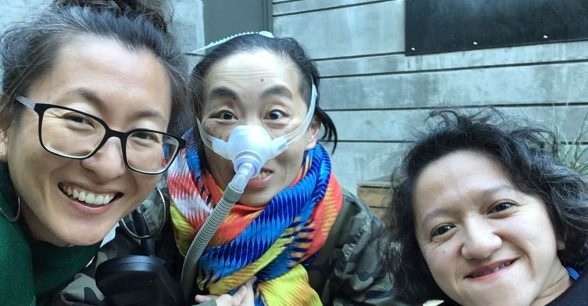Who Gets Left Behind When We Practice “Evidence-Based” Mental Health Care?
As a counselor just beginning my career, I remember entering the session on evidence-based care for school-age students with an open mind. Of course, I wanted every intervention I used in my counseling office to be based on evidence – that seemed obvious to me. I assumed that if I only used evidence-based interventions, that meant I wasn’t allowing my bias or my personal values to influence the therapeutic relationship. I would treat students of all genders, races, and backgrounds equally. But the list of evidence-based interventions was alarmingly short, and most involved manualized treatments that had to be followed page-by-page, with scripts to be read aloud, with worksheets to be completed in a specific order. I ended up leaving the session with more questions than answers about what equitable and evidence-based mental health care looked like.
Equal access to evidence-based mental health treatment sounds on the surface like a great public policy goal. Researchers and practitioners alike love the phrase “evidence-based,” and it’s used in multiple contexts to mean the highest standard of care. If healthcare providers are providing “evidence-based” care, it makes us feel that they are treating every patient equitably – regardless of race, gender, sexual orientation, native language, immigration status, or disability status. Evidence-based has somehow started to mean “without bias.” This begins to fall apart, however, when we examine what “evidence” these practices are based on.
What our society values as evidence is rooted in white, westernized, patriarchal values of science, as opposed to valuing evidence based in personal experience, relationships, intuition, and culture. This definition of evidence means that we can only study what we can quantify, track, and standardize. Additionally, most psychological research is done on undergraduate college students, which means the research base is overwhelmingly white and middle class. We then take these studies of limited populations with limited perspectives on what “evidence” means and say, “Yes, this method is evidence-based,” and it becomes the standard of care providers are held to by insurance panels, public clinics, and hospitals where grants are only given to “evidence-based” treatments.
So, what does this mean? If you are white and financially-resourced enough to afford private out-of-pocket care, you will most likely find a therapist who is going to see you as a whole person, try multiple avenues of intervention to see what feels best to you, and give you more time to grow and learn. But if you have to use insurance, particularly government insurance, plus you have the extra need to find a therapist who is affirming of your multiple identities, you are more likely to be given six weeks of standardized “treatment” in the form of psychoeducation about coping skills, worksheets, and thought exercises.
From my personal experiences with therapy, I know firsthand how difficult it was to find a therapist that valued and affirmed my identities. Finding a therapist who was actually LGBTQ+ affirming always felt like a crapshoot. One therapist who my wife and I went to when first talking about having children questioned whether raising a child as gender non-binary parents was the “right” thing to do, and told us we needed to be prepared for people to ask “who is the father?” But the therapist I loved the most, who had helped me through the death of my mother, didn’t use any of the “evidence-based” treatments I had learned about. She asked my pronouns and used them without hesitation. She helped me explore the complexities of having a mother-daughter bond broken even as I was questioning the gendered language of “daughter.” I talked, she listened and affirmed, we made art, she asked questions, and she held space for my emotions. None of that was quantifiable on a worksheet or read from a script.
Recently, I compared notes with a few other colleagues. None of the therapists we have personally seen have used any of the “evidence-based” methods we spent so much time learning about in graduate school and post-graduate training – but we all agreed that the relationships we had formed with our therapist, the time they took to thoughtfully reflect and guide us through problems, and their affirmation of our identities had been what allowed us to make growth on our own.
On the other side of the chair, a good friend of mine shared her experiences being in both public and private inpatient care. Her experience in group therapy in both settings further highlights the divide. At the public hospital, she joined a six-week group in which the facilitator was focused on completing the curriculum, rather than on getting to know the group members. They read from a workbook and patients completed activities one after the other with little time to process or talk through their reflections before the next photocopied worksheet was pulled out, and there was “homework” to be completed before the next session. But in the private hospital, the groups were open-ended, allowing space for every member to share their story and support each other, ask questions, and offer advice. The facilitator did more listening than talking, more guiding than directing. Guess which experience my friend credits to her recovery?
It’s true that key issue is money, because paying for private care gets you a different level of care. Money and funding contribute more broadly, too. What kind of care are government grants and government-funded research paying for? What do nonprofit funders highlight as the care they think should be given to certain patient populations? But it really comes down to how the values and privilege of people in power cause them to channel that money towards policy and advocacy. The people making these decisions are far-removed from the actual care: researchers who haven’t done clinical work in years, well-meaning non-profit CEOs who don’t know the ins-and-outs of what they are funding, hospital executives whose bottom line is profit and profit alone. They are also overwhelmingly white, straight, wealthy, and male – largely disconnected from so many who are affected by their decisions.
As for me, I have enough evidence that “evidence-based treatments” alone won’t bring equity to our mental healthcare system. We need diverse, multicultural perspectives at every level – directors of and participants in research studies, leadership in political and nonprofit policy-making and individual practitioners. And I will continue to push back, ask questions, and think critically – both about the mental health care I am giving and receiving.
About Rooted In Rights
Rooted in Rights exists to amplify the perspectives of the disability community. Blog posts and storyteller videos that we publish and content we re-share on social media do not necessarily reflect the opinions or values of Rooted in Rights nor indicate an endorsement of a program or service by Rooted in Rights. We respect and aim to reflect the diversity of opinions and experiences of the disability community. Rooted in Rights seeks to highlight discussions, not direct them. Learn more about Rooted In Rights



